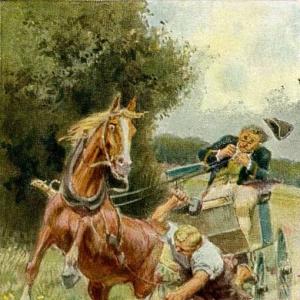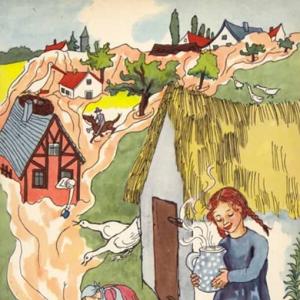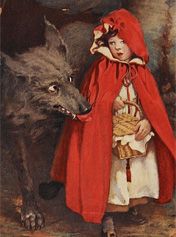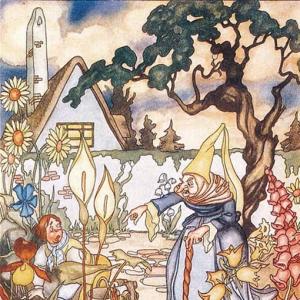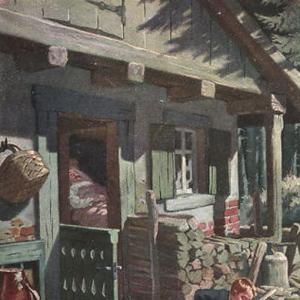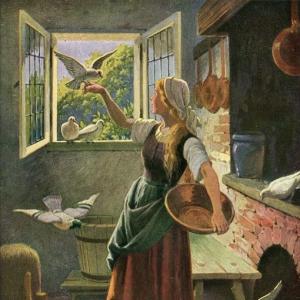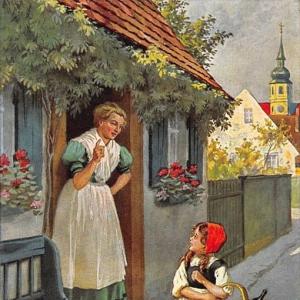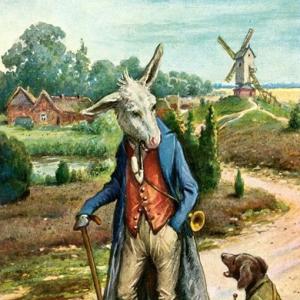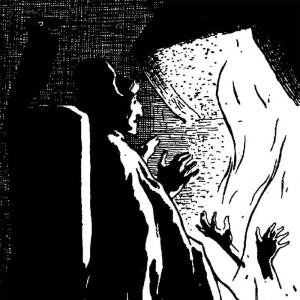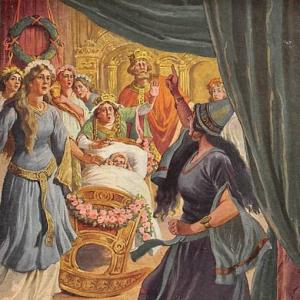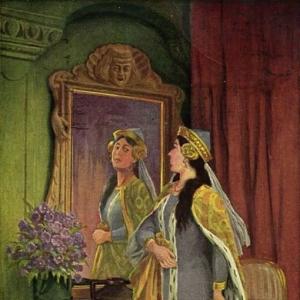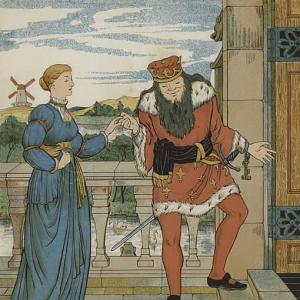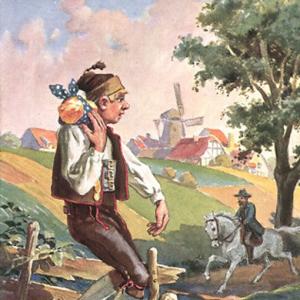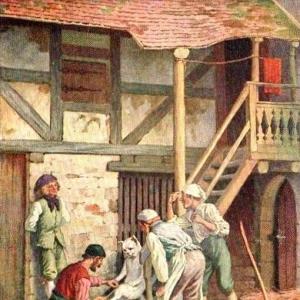Reading time for children: 4 min
In the time of Cockaigne I went there, and saw Rome and the Lateran hanging by a small silken thread, and a man without feet who outran a swift horse, and a keen sharp sword that cut through a bridge. There I saw a young ass with a silver nose which pursued two fleet hares, and a lime-tree that was very large, on which hot cakes were growing.
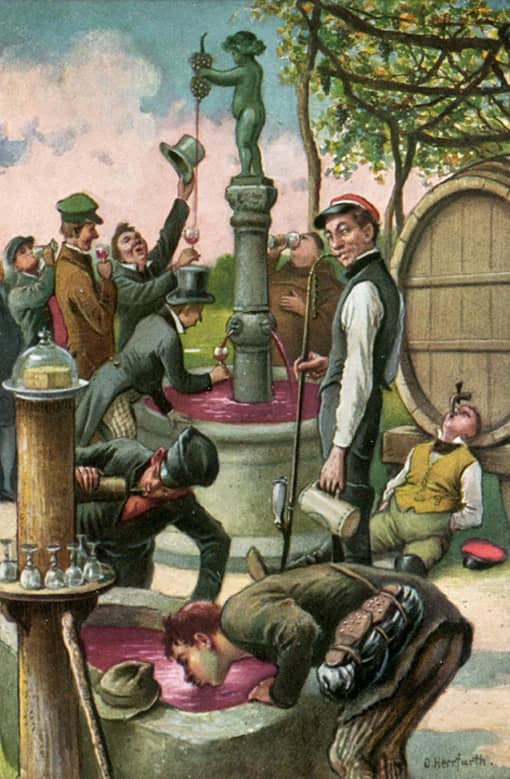
There I saw a lean old goat which carried about a hundred cart-loads of fat on his body, and sixty loads of salt. Have I not told enough lies? There I saw a plough ploughing without horse or cow, and a child of one year threw four millstones from Ratisbon to Treves, and from Treves to Strasburg, and a hawk swam over the Rhine, which he had a perfect right to do.
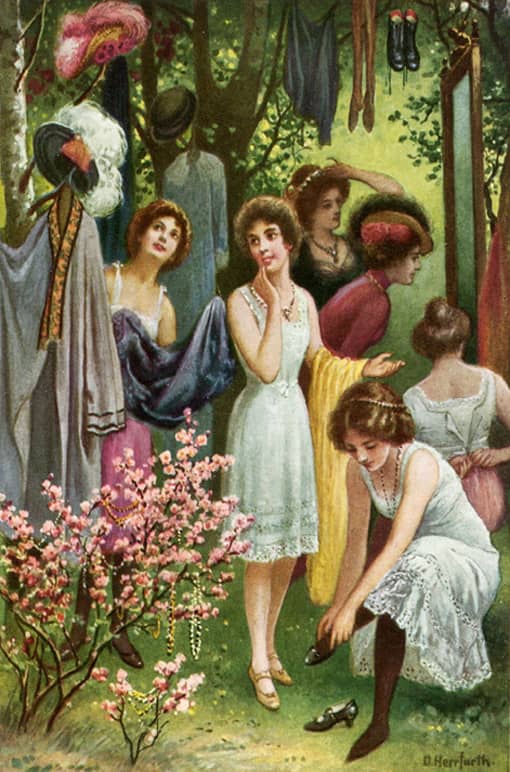
There I heard some fishes begin to make such a disturbance with each other, that it resounded as far as heaven, and sweet honey flowed like water from a deep valley at the top of a high mountain, and these were strange things.
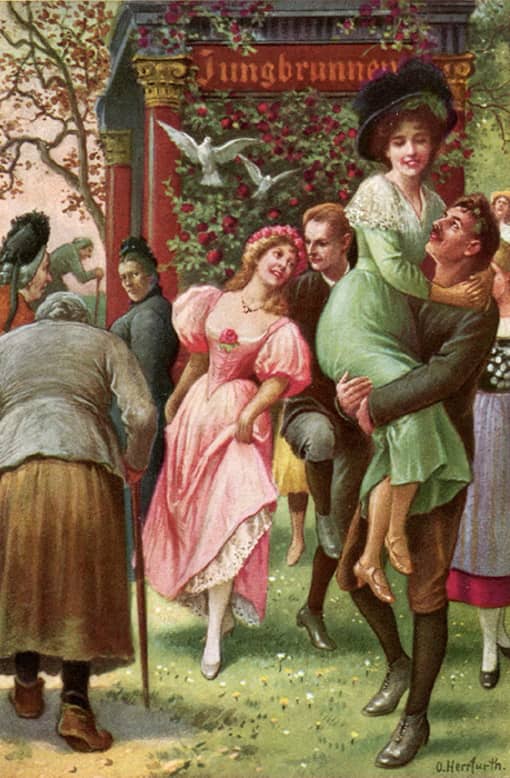
There were two crows which were mowing a meadow, and I saw two gnats building a bridge, and two doves tore a wolf to pieces; two children brought forth two kids, and two frogs threshed corn together. There I saw two mice consecrating a bishop, and two cats scratching out a bear’s tongue.
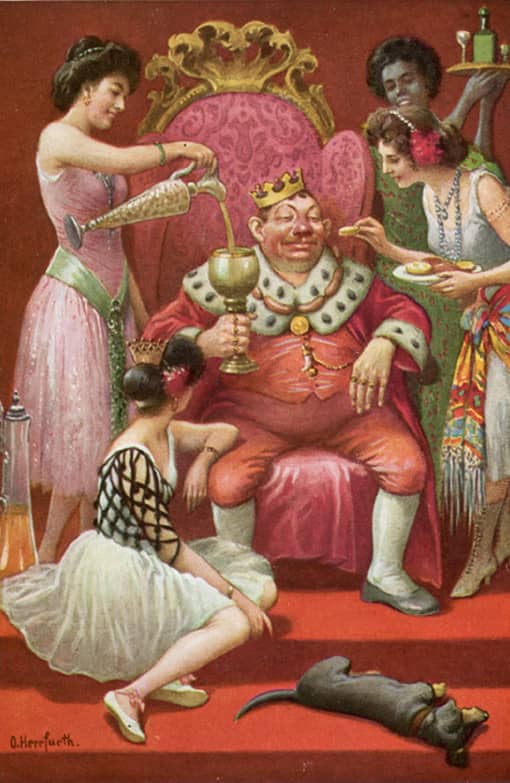
Then a snail came running up and killed two furious lions. There stood a barber and shaved a woman’s beard off; and two sucking-children bade their mother hold her tongue. There I saw two greyhounds which brought a mill out of the water; and a sorry old horse was beside it, and said it was right.
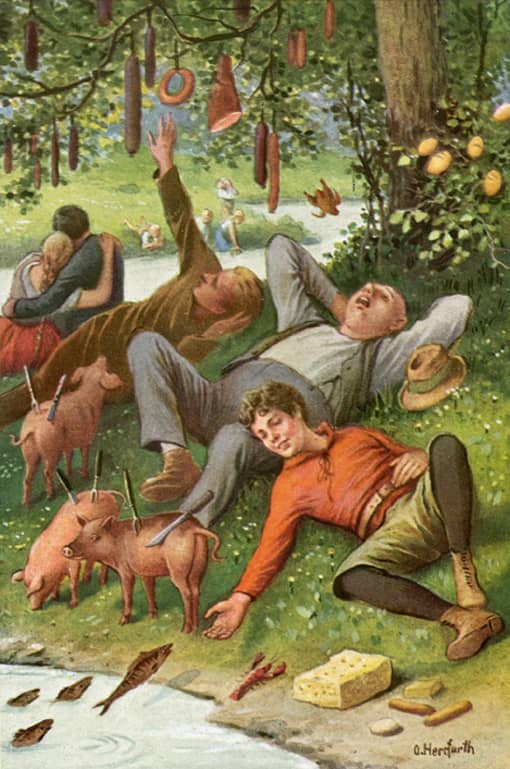
And four horses were standing in the yard threshing corn with all their might, and two goats were heating the stove, and a red cow shot the bread into the oven. Then a cock crowed, Cock-a-doodle-doo! The story is all told, Cock-a-doodle-doo!
 Learn languages. Double-tap on a word.Learn languages in context with Childstories.org and Deepl.com.
Learn languages. Double-tap on a word.Learn languages in context with Childstories.org and Deepl.com.Backgrounds
Interpretations
Summary
Linguistics
„The Tale of Cockaigne“ is a fairy tale collected by the Brothers Grimm, two German scholars, Jacob and Wilhelm Grimm, who are best known for their compilation of folktales and fairy tales in the early 19th century. Their collection, titled „Children’s and Household Tales“ (or „Grimms‘ Fairy Tales“), was first published in 1812 and has since become one of the most famous collections of fairy tales worldwide.
Cockaigne is a mythical land of plenty, a utopia often referenced in medieval European literature. It is described as a place where all desires are fulfilled, work is unnecessary, and food is abundant. In various texts, Cockaigne is depicted as a land of idleness and luxury, where rivers flow with wine, and houses are made of cake and other delicacies.
This concept of an earthly paradise can be found in various cultures and traditions throughout history, such as the Greek Elysium, the Norse Valhalla, or the Islamic Jannah. However, the land of Cockaigne differs from these paradises as it is often portrayed with a satirical and humorous tone, poking fun at human desires and the absurdity of a world that caters to every whim.
In „The Tale of Cockaigne,“ the Brothers Grimm present a whimsical and nonsensical journey through this mythical land. The story is filled with impossible events and absurd scenarios that defy logic and reason, serving as a satirical commentary on utopian fantasies and the human desire for an ideal, carefree existence.
„The Tale of Cockaigne“ by Brothers Grimm is a playful, nonsensical fairy tale filled with absurd and impossible events. Despite its whimsical nature, there are a few interpretations that can be derived from the story:
Satire of human desires and utopian fantasies: The magical land of Cockaigne, where everything is topsy-turvy and contradictory, could be interpreted as a satire on the human desire for an ideal, utopian world. The story illustrates the absurdity of seeking perfection and how the pursuit of impossible dreams can lead to irrational and unrealistic expectations.
The power of imagination and storytelling: The tale demonstrates the boundless nature of imagination and the power of storytelling. The narrator’s journey through Cockaigne is filled with fantastical elements that entertain and amuse the reader. The story highlights the importance of embracing imagination and creativity, which can provide an escape from the mundane realities of everyday life.
The subversion of expectations: The fairy tale consistently subverts the reader’s expectations by presenting scenarios that defy logic and reason. This subversion serves as a reminder to question norms and assumptions, as well as to embrace the unpredictable nature of life. By challenging conventional ideas, the story encourages readers to think critically and to develop a flexible mindset.
The fluidity of truth and falsehood: The Tale of Cockaigne is filled with events that are obviously impossible and far-fetched, yet they are presented as facts within the story. This fluidity between truth and falsehood highlights the subjective nature of reality and the power of perspective. What one person may consider a truth, another may consider a lie. The tale serves as a reminder that reality can be malleable and that narratives can shape our understanding of the world.
„The Tale of Cockaigne“ by Brothers Grimm is a whimsical and nonsensical fairy tale that narrates the narrator’s journey to the magical land of Cockaigne. In this land, the impossible becomes reality and absurdity reigns supreme. The narrator recounts witnessing Rome and the Lateran hanging by a thin silk thread, a man without feet outrunning a horse, and a sword that cuts through a bridge. In this land, a young donkey with a silver nose chases fast hares, and a massive lime tree grows hot cakes.
An old, lean goat carries a heavy load of fat and salt, while a plow operates without a horse or cow. A one-year-old child throws millstones across great distances, and a hawk swims across the Rhine. Fish create a ruckus that reaches the heavens, and honey flows like water from a valley atop a high mountain.
Unusual events continue as crows mow a meadow, gnats build a bridge, doves tear a wolf apart, children give birth to kids, and frogs thresh corn together. Mice consecrate a bishop, and cats claw out a bear’s tongue. A snail defeats two lions, a barber shaves a woman’s beard, and children order their mother to be quiet. Finally, greyhounds pull a mill from the water, a horse comments on the situation, other horses thresh corn, goats heat a stove, and a red cow places bread in the oven. The tale concludes as a rooster crows, marking the end of the story.
The excerpt from „The Tale of Cockaigne“ by the Brothers Grimm is rich in fantastical and absurd imagery, which is characteristic of the mythical land of Cockaigne. This fairy tale provides a humorous and satirical take on a utopian world where the impossible becomes possible and social norms are inverted.
Surreal Imagery: The tale is filled with surreal and exaggerated imagery, such as „a man without feet who outran a swift horse“ and „a keen sharp sword that cut through a bridge. “ Such imagery creates a dream-like atmosphere where logic is defied, aligning with the whimsical nature of fairy tales.
Repetition and Variability: The use of repeated structures („There I saw. . . „) within the narrative contributes to a rhythm that mimics oral storytelling traditions. Despite the repetitions, the variability in the described scenes maintains reader interest and emphasizes the endless marvels of Cockaigne.
Anthropomorphism: Animals are depicted with human-like traits and capabilities, such as „two crows which were mowing a meadow“ and „two mice consecrating a bishop. “ This anthropomorphism is typical in fairy tales and serves to both amuse and offer criticism or insight into human behavior.
Absurdity and Irony: The story intentionally embraces the absurd, which is evident when „a snail came running up and killed two furious lions. “ This use of irony and defied expectations serves as satire, potentially critiquing real-world societal structures, values, and human folly.
Symbolism: The tale makes symbolic use of food and labor, with images like „sweet honey flowed like water“ and „two goats were heating the stove. “ These elements evoke the theme of abundance and ease, contrasting with the hardships of medieval life from which this story likely originates.
Playful Tone: The whimsical and playful tone is enhanced by the nonsensical scenarios and humorous reversals of reality, culminating in the cock’s crow—“Cock-a-doodle-doo!“—which serves as a jovial, almost mocking closure.
Themes and Interpretation
Utopian Fantasy: Cockaigne symbolizes a land of plenty, where poverty and labor are unknown, reflecting humanity’s desire for an idyllic existence free from suffering and toil.
Subversion of Reality: The tale flips ordinary expectations, inviting readers to question societal norms and structures, thereby offering a lens through which to critique everyday life.
Narrative Nonsense: The deliberate embrace of the nonsensical challenges readers to find joy and meaning in the absurd, a common element in folklore that often invites broader reflection on life’s contrasts.
Overall, „The Tale of Cockaigne“ uses linguistic creativity to craft a world that humorously inverts reality, exploring themes of abundance, absurdity, and societal critique through vibrant and surreal storytelling techniques.
Information for scientific analysis
Fairy tale statistics | Value |
|---|---|
| Number | KHM 158 |
| Aarne-Thompson-Uther-Index | ATU Typ 1930 |
| Translations | DE, EN, DA, ES, PT, IT, JA, NL, PL, RU, TR, VI, ZH |
| Readability Index by Björnsson | 34.7 |
| Flesch-Reading-Ease Index | 78.4 |
| Flesch–Kincaid Grade-Level | 8.4 |
| Gunning Fog Index | 10.5 |
| Coleman–Liau Index | 7.9 |
| SMOG Index | 7.6 |
| Automated Readability Index | 9.8 |
| Character Count | 1.804 |
| Letter Count | 1.382 |
| Sentence Count | 14 |
| Word Count | 343 |
| Average Words per Sentence | 24,50 |
| Words with more than 6 letters | 35 |
| Percentage of long words | 10.2% |
| Number of Syllables | 420 |
| Average Syllables per Word | 1,22 |
| Words with three Syllables | 8 |
| Percentage Words with three Syllables | 2.3% |

